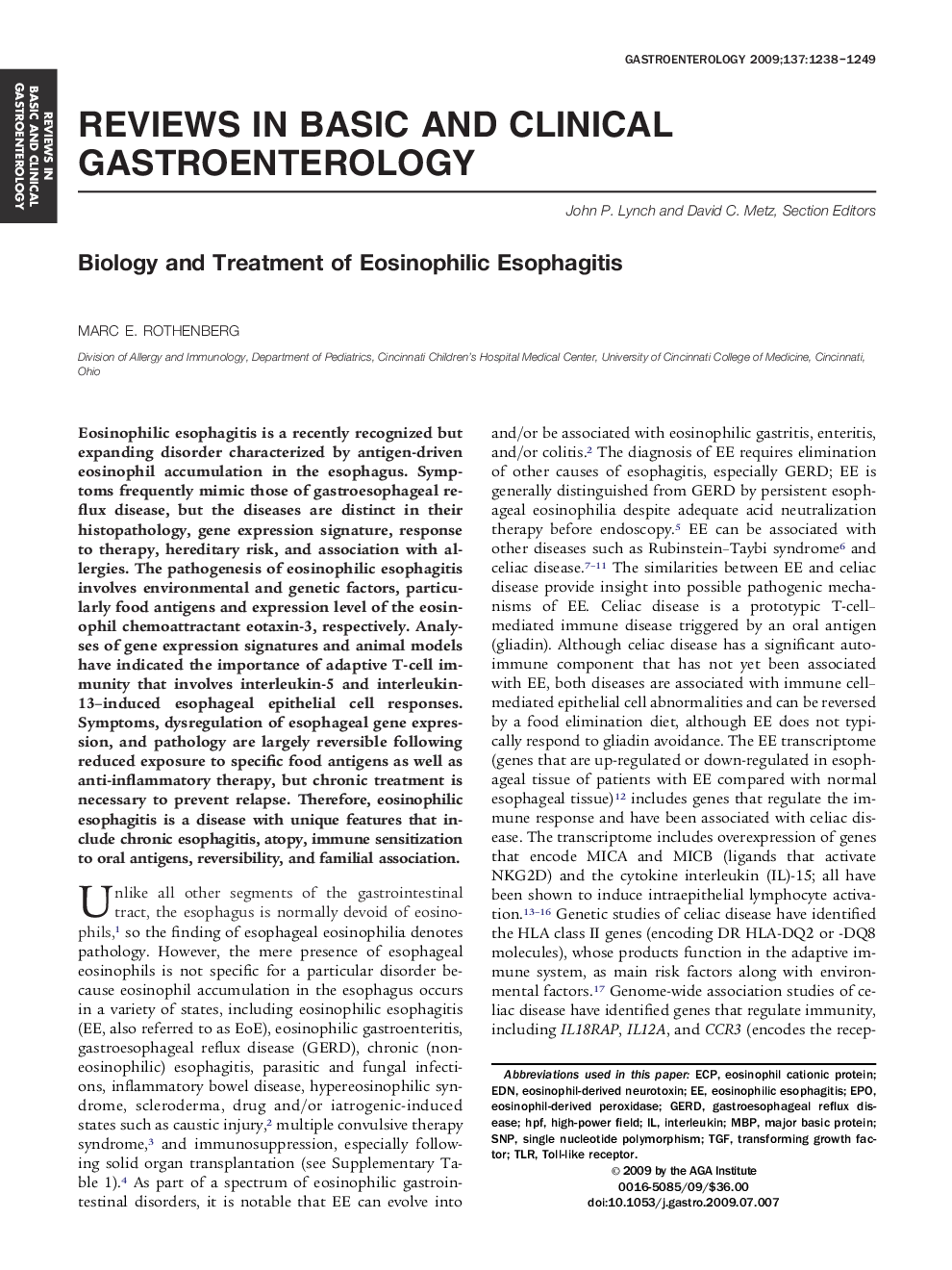| کد مقاله | کد نشریه | سال انتشار | مقاله انگلیسی | نسخه تمام متن |
|---|---|---|---|---|
| 3294833 | 1209847 | 2009 | 12 صفحه PDF | دانلود رایگان |

Eosinophilic esophagitis is a recently recognized but expanding disorder characterized by antigen-driven eosinophil accumulation in the esophagus. Symptoms frequently mimic those of gastroesophageal reflux disease, but the diseases are distinct in their histopathology, gene expression signature, response to therapy, hereditary risk, and association with allergies. The pathogenesis of eosinophilic esophagitis involves environmental and genetic factors, particularly food antigens and expression level of the eosinophil chemoattractant eotaxin-3, respectively. Analyses of gene expression signatures and animal models have indicated the importance of adaptive T-cell immunity that involves interleukin-5 and interleukin-13–induced esophageal epithelial cell responses. Symptoms, dysregulation of esophageal gene expression, and pathology are largely reversible following reduced exposure to specific food antigens as well as anti-inflammatory therapy, but chronic treatment is necessary to prevent relapse. Therefore, eosinophilic esophagitis is a disease with unique features that include chronic esophagitis, atopy, immune sensitization to oral antigens, reversibility, and familial association.
Journal: Gastroenterology - Volume 137, Issue 4, October 2009, Pages 1238–1249